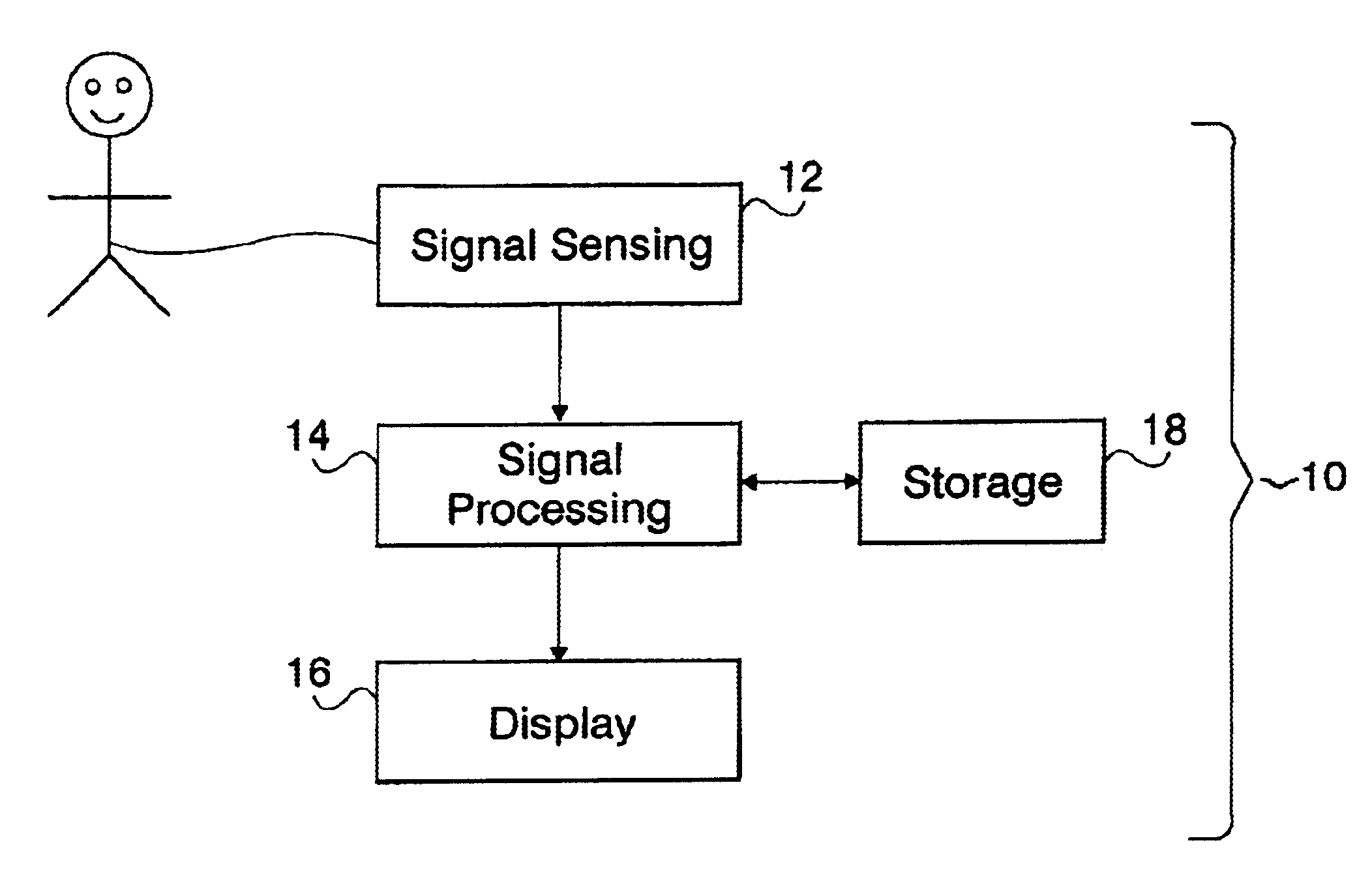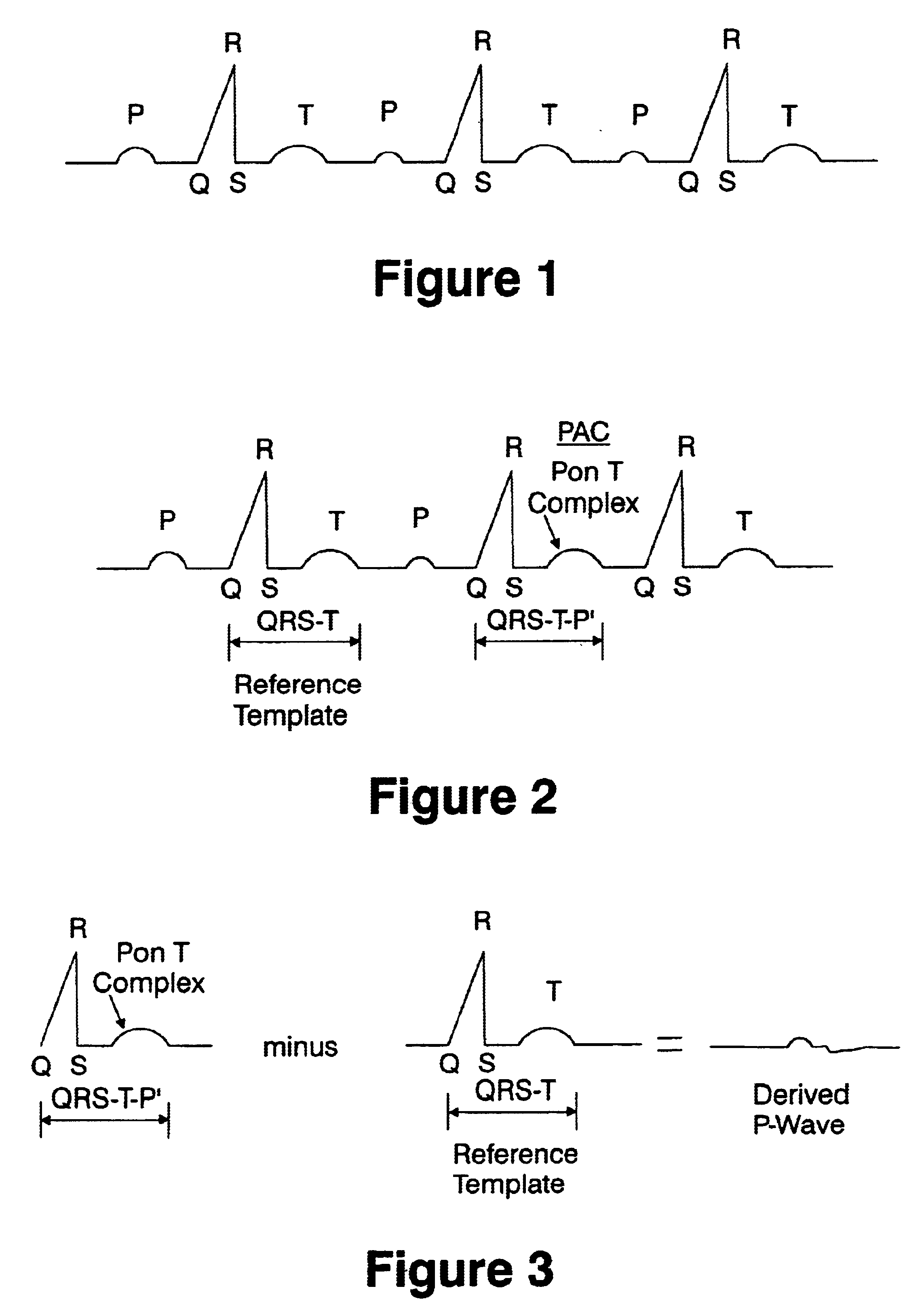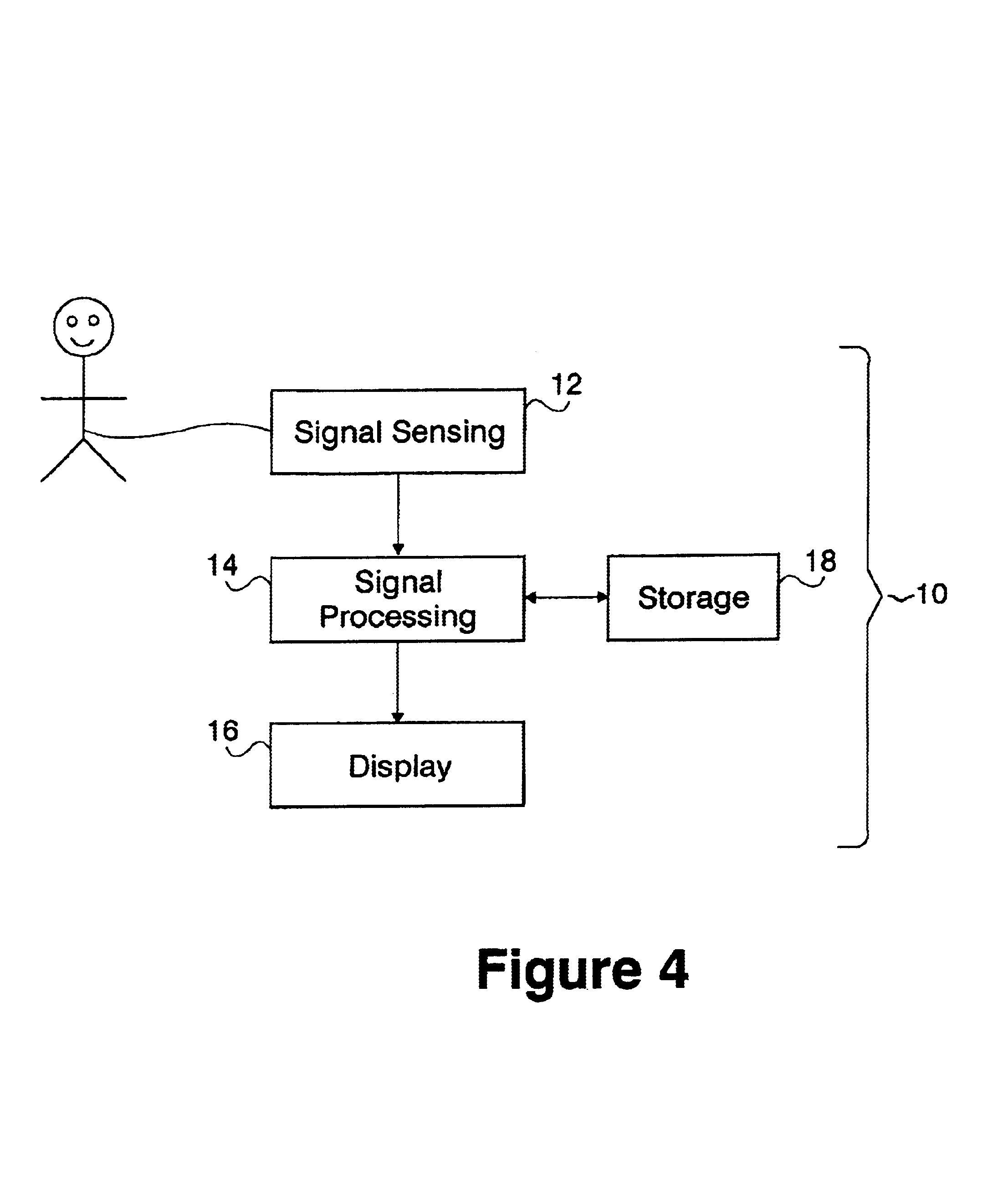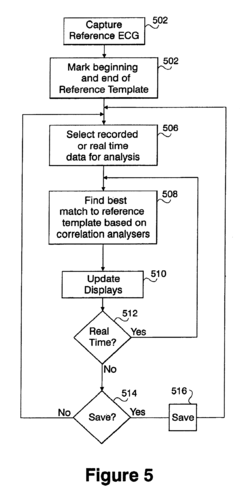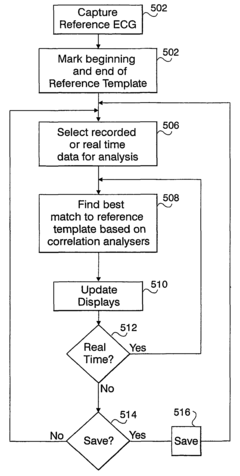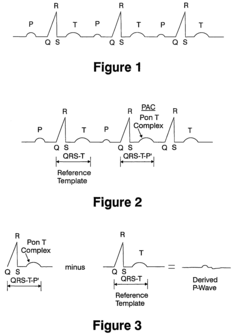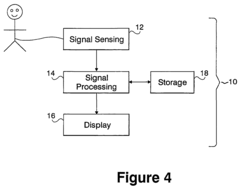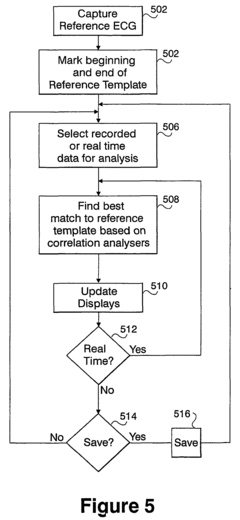Role of P wave in regenerative cardiac medicine approaches
AUG 19, 20259 MIN READ
Generate Your Research Report Instantly with AI Agent
Patsnap Eureka helps you evaluate technical feasibility & market potential.
P Wave Background
The P wave is a crucial component of the electrocardiogram (ECG), representing the electrical activity of atrial depolarization in the heart. It precedes the QRS complex and typically appears as a small, rounded, positive deflection on the ECG tracing. The P wave's significance in cardiac function and its potential role in regenerative cardiac medicine approaches have garnered increasing attention in recent years.
Historically, the P wave was first described by Willem Einthoven in the early 20th century as part of his groundbreaking work on electrocardiography. Since then, our understanding of the P wave's physiological and clinical importance has evolved considerably. In normal cardiac conduction, the P wave originates from the sinoatrial (SA) node, the heart's natural pacemaker, and propagates through the atrial myocardium.
The morphology and timing of the P wave provide valuable information about atrial function and can indicate various cardiac abnormalities. For instance, changes in P wave amplitude, duration, or axis can suggest atrial enlargement, conduction disorders, or ectopic atrial rhythms. These characteristics have long been used in clinical diagnostics to assess cardiac health and guide treatment decisions.
In the context of regenerative cardiac medicine, the P wave has emerged as a potential target for novel therapeutic approaches. Researchers are exploring ways to manipulate or enhance P wave characteristics to improve cardiac function in patients with various heart conditions. This includes investigating the use of stem cells, gene therapy, and bioengineered tissues to restore or optimize atrial electrical activity.
One area of particular interest is the role of the P wave in atrial fibrillation (AF), a common cardiac arrhythmia. Studies have shown that alterations in P wave morphology and timing can precede the onset of AF, suggesting that P wave analysis could be used for early detection and prevention strategies. Moreover, regenerative approaches aimed at modulating P wave characteristics may offer new avenues for treating AF and other atrial disorders.
The P wave also plays a crucial role in maintaining proper atrioventricular (AV) synchrony, which is essential for optimal cardiac output. In regenerative cardiac medicine, researchers are exploring techniques to preserve or restore this synchrony in patients with heart failure or conduction system disorders. This includes developing biological pacemakers that can generate physiological P waves and maintain normal atrial-ventricular coordination.
As our understanding of cardiac electrophysiology continues to advance, the P wave's role in regenerative cardiac medicine is likely to expand. Emerging technologies, such as high-resolution ECG mapping and computational modeling, are providing new insights into P wave generation and propagation. These advancements may lead to more targeted and effective regenerative strategies that leverage the P wave's properties to improve cardiac function and patient outcomes.
Historically, the P wave was first described by Willem Einthoven in the early 20th century as part of his groundbreaking work on electrocardiography. Since then, our understanding of the P wave's physiological and clinical importance has evolved considerably. In normal cardiac conduction, the P wave originates from the sinoatrial (SA) node, the heart's natural pacemaker, and propagates through the atrial myocardium.
The morphology and timing of the P wave provide valuable information about atrial function and can indicate various cardiac abnormalities. For instance, changes in P wave amplitude, duration, or axis can suggest atrial enlargement, conduction disorders, or ectopic atrial rhythms. These characteristics have long been used in clinical diagnostics to assess cardiac health and guide treatment decisions.
In the context of regenerative cardiac medicine, the P wave has emerged as a potential target for novel therapeutic approaches. Researchers are exploring ways to manipulate or enhance P wave characteristics to improve cardiac function in patients with various heart conditions. This includes investigating the use of stem cells, gene therapy, and bioengineered tissues to restore or optimize atrial electrical activity.
One area of particular interest is the role of the P wave in atrial fibrillation (AF), a common cardiac arrhythmia. Studies have shown that alterations in P wave morphology and timing can precede the onset of AF, suggesting that P wave analysis could be used for early detection and prevention strategies. Moreover, regenerative approaches aimed at modulating P wave characteristics may offer new avenues for treating AF and other atrial disorders.
The P wave also plays a crucial role in maintaining proper atrioventricular (AV) synchrony, which is essential for optimal cardiac output. In regenerative cardiac medicine, researchers are exploring techniques to preserve or restore this synchrony in patients with heart failure or conduction system disorders. This includes developing biological pacemakers that can generate physiological P waves and maintain normal atrial-ventricular coordination.
As our understanding of cardiac electrophysiology continues to advance, the P wave's role in regenerative cardiac medicine is likely to expand. Emerging technologies, such as high-resolution ECG mapping and computational modeling, are providing new insights into P wave generation and propagation. These advancements may lead to more targeted and effective regenerative strategies that leverage the P wave's properties to improve cardiac function and patient outcomes.
Clinical Need Analysis
Regenerative cardiac medicine approaches have gained significant attention in recent years due to the increasing prevalence of cardiovascular diseases and the limited regenerative capacity of the human heart. The clinical need for innovative therapies in this field is driven by the high mortality rates associated with heart failure and the limitations of current treatment options.
Cardiovascular diseases remain the leading cause of death globally, with heart failure affecting millions of patients worldwide. Traditional treatments, such as pharmacological interventions and surgical procedures, often provide symptomatic relief but fail to address the underlying issue of damaged cardiac tissue. This gap in treatment efficacy highlights the urgent need for regenerative approaches that can restore cardiac function and improve patient outcomes.
The P wave, a crucial component of the cardiac electrical cycle, represents atrial depolarization and plays a vital role in maintaining proper heart rhythm. Understanding and harnessing the potential of the P wave in regenerative cardiac medicine could lead to groundbreaking therapies for various cardiac disorders, including atrial fibrillation, conduction abnormalities, and structural heart defects.
Current clinical challenges in cardiac regeneration include the limited ability to regenerate functional cardiomyocytes, restore proper electrical conduction, and integrate newly formed tissue with existing cardiac structures. The P wave's role in coordinating atrial contraction and initiating ventricular depolarization makes it a promising target for regenerative approaches aimed at improving overall cardiac function.
The potential applications of P wave-based regenerative therapies extend to a wide range of cardiac conditions. For patients with atrial fibrillation, restoring normal P wave propagation could help maintain sinus rhythm and reduce the risk of complications. In cases of conduction disorders, regenerative approaches targeting the P wave pathway may offer new possibilities for restoring proper electrical signaling throughout the heart.
Furthermore, the aging population and the increasing prevalence of chronic cardiac conditions underscore the need for innovative regenerative strategies. As traditional therapies often fall short in addressing the root causes of cardiac dysfunction, P wave-focused regenerative approaches could potentially offer more comprehensive and long-lasting solutions for patients with various forms of heart disease.
The clinical demand for P wave-based regenerative cardiac medicine is also driven by the limitations of current cardiac devices and interventions. While pacemakers and implantable cardioverter-defibrillators provide essential rhythm management, they do not address the underlying tissue damage or promote natural regeneration. Integrating P wave-focused regenerative approaches with existing technologies could lead to more effective and physiologically compatible treatment options for patients with complex cardiac conditions.
Cardiovascular diseases remain the leading cause of death globally, with heart failure affecting millions of patients worldwide. Traditional treatments, such as pharmacological interventions and surgical procedures, often provide symptomatic relief but fail to address the underlying issue of damaged cardiac tissue. This gap in treatment efficacy highlights the urgent need for regenerative approaches that can restore cardiac function and improve patient outcomes.
The P wave, a crucial component of the cardiac electrical cycle, represents atrial depolarization and plays a vital role in maintaining proper heart rhythm. Understanding and harnessing the potential of the P wave in regenerative cardiac medicine could lead to groundbreaking therapies for various cardiac disorders, including atrial fibrillation, conduction abnormalities, and structural heart defects.
Current clinical challenges in cardiac regeneration include the limited ability to regenerate functional cardiomyocytes, restore proper electrical conduction, and integrate newly formed tissue with existing cardiac structures. The P wave's role in coordinating atrial contraction and initiating ventricular depolarization makes it a promising target for regenerative approaches aimed at improving overall cardiac function.
The potential applications of P wave-based regenerative therapies extend to a wide range of cardiac conditions. For patients with atrial fibrillation, restoring normal P wave propagation could help maintain sinus rhythm and reduce the risk of complications. In cases of conduction disorders, regenerative approaches targeting the P wave pathway may offer new possibilities for restoring proper electrical signaling throughout the heart.
Furthermore, the aging population and the increasing prevalence of chronic cardiac conditions underscore the need for innovative regenerative strategies. As traditional therapies often fall short in addressing the root causes of cardiac dysfunction, P wave-focused regenerative approaches could potentially offer more comprehensive and long-lasting solutions for patients with various forms of heart disease.
The clinical demand for P wave-based regenerative cardiac medicine is also driven by the limitations of current cardiac devices and interventions. While pacemakers and implantable cardioverter-defibrillators provide essential rhythm management, they do not address the underlying tissue damage or promote natural regeneration. Integrating P wave-focused regenerative approaches with existing technologies could lead to more effective and physiologically compatible treatment options for patients with complex cardiac conditions.
P Wave Research Status
The P wave, representing atrial depolarization in the electrocardiogram (ECG), has emerged as a crucial focus in regenerative cardiac medicine approaches. Recent research has significantly advanced our understanding of its role in cardiac function and its potential in developing novel therapeutic strategies.
Current studies have demonstrated that P wave analysis can provide valuable insights into atrial remodeling and fibrosis, which are key factors in various cardiac pathologies. Researchers have identified specific P wave morphology changes associated with different stages of atrial fibrillation, offering a non-invasive method for early detection and risk stratification.
In the context of regenerative medicine, P wave characteristics are being explored as potential biomarkers for assessing the efficacy of stem cell therapies and other regenerative approaches. Several studies have reported alterations in P wave duration and amplitude following stem cell transplantation, suggesting that these parameters may reflect improvements in atrial electrical conduction and structural remodeling.
Advanced signal processing techniques have enabled more detailed analysis of P wave characteristics. Wavelet transform and machine learning algorithms are now being applied to extract subtle features from P waves, potentially revealing early signs of atrial dysfunction before clinical symptoms manifest.
The integration of P wave analysis with other cardiac imaging modalities, such as echocardiography and cardiac MRI, has opened new avenues for comprehensive assessment of atrial function. This multimodal approach is proving particularly valuable in evaluating the outcomes of regenerative therapies targeting atrial tissue.
Recent animal studies have demonstrated the feasibility of using P wave-guided approaches for targeted delivery of regenerative therapies. By identifying regions of abnormal atrial conduction through P wave mapping, researchers have been able to precisely deliver stem cells or gene therapies to areas most in need of regeneration.
Clinical trials are now underway to validate the use of P wave parameters as endpoints in regenerative cardiac medicine studies. These trials aim to establish standardized protocols for P wave analysis and determine its predictive value in assessing long-term outcomes of regenerative interventions.
Despite these advancements, challenges remain in translating P wave research into clinical practice. Variability in P wave measurements across different ECG systems and the need for more robust algorithms to handle noise and artifacts are areas of ongoing research. Additionally, the complex relationship between P wave changes and underlying atrial pathophysiology requires further elucidation.
Current studies have demonstrated that P wave analysis can provide valuable insights into atrial remodeling and fibrosis, which are key factors in various cardiac pathologies. Researchers have identified specific P wave morphology changes associated with different stages of atrial fibrillation, offering a non-invasive method for early detection and risk stratification.
In the context of regenerative medicine, P wave characteristics are being explored as potential biomarkers for assessing the efficacy of stem cell therapies and other regenerative approaches. Several studies have reported alterations in P wave duration and amplitude following stem cell transplantation, suggesting that these parameters may reflect improvements in atrial electrical conduction and structural remodeling.
Advanced signal processing techniques have enabled more detailed analysis of P wave characteristics. Wavelet transform and machine learning algorithms are now being applied to extract subtle features from P waves, potentially revealing early signs of atrial dysfunction before clinical symptoms manifest.
The integration of P wave analysis with other cardiac imaging modalities, such as echocardiography and cardiac MRI, has opened new avenues for comprehensive assessment of atrial function. This multimodal approach is proving particularly valuable in evaluating the outcomes of regenerative therapies targeting atrial tissue.
Recent animal studies have demonstrated the feasibility of using P wave-guided approaches for targeted delivery of regenerative therapies. By identifying regions of abnormal atrial conduction through P wave mapping, researchers have been able to precisely deliver stem cells or gene therapies to areas most in need of regeneration.
Clinical trials are now underway to validate the use of P wave parameters as endpoints in regenerative cardiac medicine studies. These trials aim to establish standardized protocols for P wave analysis and determine its predictive value in assessing long-term outcomes of regenerative interventions.
Despite these advancements, challenges remain in translating P wave research into clinical practice. Variability in P wave measurements across different ECG systems and the need for more robust algorithms to handle noise and artifacts are areas of ongoing research. Additionally, the complex relationship between P wave changes and underlying atrial pathophysiology requires further elucidation.
P Wave Measurement Tech
01 P wave detection in ECG signals
Methods and systems for detecting P waves in electrocardiogram (ECG) signals. These techniques involve analyzing the morphology and timing of ECG waveforms to accurately identify P waves, which represent atrial depolarization. Advanced algorithms are used to distinguish P waves from other ECG components and noise, improving the accuracy of cardiac rhythm analysis.- P wave detection in ECG signals: Methods and systems for detecting P waves in electrocardiogram (ECG) signals. These techniques involve analyzing the morphology and timing of ECG waveforms to accurately identify P waves, which represent atrial depolarization. Advanced algorithms are used to distinguish P waves from other ECG components and noise, improving the accuracy of cardiac rhythm analysis.
- P wave analysis for arrhythmia detection: Techniques for analyzing P wave characteristics to detect and classify various types of cardiac arrhythmias. This includes examining P wave morphology, duration, and amplitude to identify atrial fibrillation, atrial flutter, and other rhythm disorders. Machine learning algorithms may be employed to improve the accuracy of arrhythmia classification based on P wave features.
- P wave modulation in communication systems: Methods for modulating P waves in wireless communication systems to improve signal transmission and reception. These techniques involve manipulating the phase, frequency, or amplitude of P waves to enhance data encoding, reduce interference, and increase overall system performance in various communication applications.
- P wave analysis in seismic exploration: Techniques for analyzing P waves in seismic data to characterize subsurface structures and properties. These methods involve processing and interpreting P wave reflections and refractions to create detailed images of geological formations, aiding in oil and gas exploration, geothermal resource assessment, and other geophysical applications.
- P wave-based biometric authentication: Systems and methods for using P wave characteristics in ECG signals as a biometric identifier for authentication purposes. This approach leverages the unique properties of an individual's P wave morphology to create a secure and difficult-to-forge biometric signature, which can be used for access control or identity verification in various applications.
02 P wave analysis for arrhythmia detection
Techniques for analyzing P wave characteristics to detect and classify various types of cardiac arrhythmias. This includes examining P wave morphology, duration, and amplitude to identify conditions such as atrial fibrillation, atrial flutter, and other atrial abnormalities. These methods enhance the diagnostic capabilities of ECG monitoring systems.Expand Specific Solutions03 P wave modulation in communication systems
Techniques for modulating P waves in communication systems, particularly in wireless and optical communications. These methods involve manipulating the phase, frequency, or amplitude of P waves to encode and transmit information efficiently. Advanced modulation schemes are used to improve data transmission rates and signal quality.Expand Specific Solutions04 P wave analysis in seismic exploration
Methods for analyzing P waves in seismic exploration to gather information about subsurface structures. These techniques involve generating, detecting, and processing P waves to create detailed images of geological formations. Advanced signal processing algorithms are used to enhance the resolution and accuracy of seismic data interpretation.Expand Specific Solutions05 P wave-based user interface interactions
Innovative methods for using P wave detection and analysis in user interface systems. These techniques involve interpreting P waves generated by user gestures or movements to control electronic devices or navigate through user interfaces. This technology enhances the intuitiveness and responsiveness of human-computer interactions.Expand Specific Solutions
Key Cardiac Research Labs
The role of P waves in regenerative cardiac medicine approaches is an emerging field with significant potential. The market is in its early growth stage, with increasing research and development efforts. While the exact market size is not specified, it is expected to expand as the technology matures. Companies like Bardy Diagnostics, Medtronic, and Boston Scientific are at the forefront, developing innovative cardiac monitoring devices that leverage P wave analysis. The technology's maturity varies, with some companies offering commercial products while others are still in research phases. Academic institutions such as Baylor College of Medicine and Cincinnati Children's Hospital Medical Center are also contributing to advancements in this area, indicating a collaborative ecosystem between industry and academia.
Medtronic, Inc.
Technical Solution: Medtronic has developed advanced cardiac regeneration approaches that leverage the role of P waves in heart rhythm management. Their technology utilizes P wave morphology analysis to guide stem cell therapy and tissue engineering for cardiac repair[1]. By precisely timing the delivery of regenerative agents with P wave characteristics, they enhance the integration and functionality of newly formed cardiac tissue[3]. Medtronic's system also incorporates real-time P wave monitoring to assess the progress of cardiac regeneration and adjust treatment protocols accordingly[5]. This adaptive approach allows for personalized regenerative medicine strategies that can be optimized based on individual patient responses and P wave patterns.
Strengths: Comprehensive P wave analysis for targeted regeneration; adaptive treatment protocols. Weaknesses: Complexity of implementation; potential for over-reliance on P wave data alone.
Boston Scientific Scimed, Inc.
Technical Solution: Boston Scientific has pioneered a regenerative cardiac medicine approach that focuses on the modulation of P wave characteristics to enhance cardiac repair. Their technology employs a novel bioelectronic interface that can detect subtle changes in P wave morphology and use this information to guide the application of regenerative therapies[2]. The system includes a proprietary algorithm that correlates P wave alterations with specific stages of cardiac tissue regeneration, allowing for precise timing of interventions[4]. Additionally, Boston Scientific has developed biodegradable scaffolds that can be implanted in synchronization with P wave-guided regenerative processes, promoting optimal tissue growth and functional recovery[6].
Strengths: Innovative bioelectronic P wave modulation; integration with biodegradable scaffolds. Weaknesses: Limited long-term data on efficacy; potential for interference with natural cardiac conduction.
P Wave Regeneration Lit
Methods for processing electrocardiac signals having superimposed complexes
PatentInactiveUS6944495B2
Innovation
- A computerized method for processing electrocardiac signals to derive and compare P-wave signals without overlap, using correlation coefficient calculations and template matching to objectively identify and synchronize sub-component waveforms, allowing for real-time pace mapping and improved signal processing with standard 12-lead ECG systems.
Systems for processing electrocardiac signals having superimposed complexes
PatentInactiveUS7272437B2
Innovation
- A computerized system for processing ECG signals that objectively derives and compares P-wave signals by using correlation analysis and template matching, allowing for real-time pace mapping and monitoring, even when P-waves overlap with T-waves, and quantitatively measures the quality of T-wave subtraction results to account for variations caused by respiration or movement.
Regulatory Considerations
The regulatory landscape for regenerative cardiac medicine approaches involving P wave manipulation is complex and evolving. Regulatory bodies, such as the FDA in the United States and the EMA in Europe, have established specific guidelines for cell and gene therapies, which are applicable to many regenerative cardiac treatments. These guidelines address safety, efficacy, and quality control aspects of novel therapies.
One key regulatory consideration is the classification of P wave-based interventions. Depending on the specific approach, these treatments may be categorized as medical devices, biologics, or combination products. This classification significantly impacts the regulatory pathway and requirements for clinical trials and market approval.
Safety is a paramount concern for regulators. P wave manipulation in cardiac tissue carries potential risks, including arrhythmias, tissue damage, and unintended effects on other cardiac functions. Regulatory bodies require robust preclinical data demonstrating safety profiles before human trials can commence. Long-term follow-up studies are often mandated to monitor for delayed adverse effects.
Efficacy assessment presents unique challenges in P wave-based therapies. Regulators expect clear, measurable endpoints that demonstrate clinically meaningful improvements in cardiac function. This may include metrics such as reduced arrhythmia incidence, improved conduction patterns, or enhanced overall cardiac performance.
Manufacturing and quality control processes for regenerative cardiac therapies are subject to stringent regulatory oversight. Good Manufacturing Practice (GMP) compliance is essential, particularly for cell-based therapies that may involve P wave modulation. Consistency in production, characterization of final products, and stability testing are critical regulatory requirements.
Ethical considerations also play a significant role in the regulatory landscape. The use of stem cells or genetic modifications in cardiac regeneration raises ethical questions that regulators must address. Informed consent procedures, patient selection criteria, and long-term patient monitoring are areas of particular regulatory focus.
As the field of regenerative cardiac medicine advances, regulatory frameworks are likely to evolve. Adaptive licensing approaches and accelerated approval pathways may become more prevalent for promising P wave-based therapies, particularly for conditions with high unmet medical needs. However, post-market surveillance requirements are expected to become more stringent to ensure long-term safety and efficacy.
One key regulatory consideration is the classification of P wave-based interventions. Depending on the specific approach, these treatments may be categorized as medical devices, biologics, or combination products. This classification significantly impacts the regulatory pathway and requirements for clinical trials and market approval.
Safety is a paramount concern for regulators. P wave manipulation in cardiac tissue carries potential risks, including arrhythmias, tissue damage, and unintended effects on other cardiac functions. Regulatory bodies require robust preclinical data demonstrating safety profiles before human trials can commence. Long-term follow-up studies are often mandated to monitor for delayed adverse effects.
Efficacy assessment presents unique challenges in P wave-based therapies. Regulators expect clear, measurable endpoints that demonstrate clinically meaningful improvements in cardiac function. This may include metrics such as reduced arrhythmia incidence, improved conduction patterns, or enhanced overall cardiac performance.
Manufacturing and quality control processes for regenerative cardiac therapies are subject to stringent regulatory oversight. Good Manufacturing Practice (GMP) compliance is essential, particularly for cell-based therapies that may involve P wave modulation. Consistency in production, characterization of final products, and stability testing are critical regulatory requirements.
Ethical considerations also play a significant role in the regulatory landscape. The use of stem cells or genetic modifications in cardiac regeneration raises ethical questions that regulators must address. Informed consent procedures, patient selection criteria, and long-term patient monitoring are areas of particular regulatory focus.
As the field of regenerative cardiac medicine advances, regulatory frameworks are likely to evolve. Adaptive licensing approaches and accelerated approval pathways may become more prevalent for promising P wave-based therapies, particularly for conditions with high unmet medical needs. However, post-market surveillance requirements are expected to become more stringent to ensure long-term safety and efficacy.
Ethical Implications
The integration of P wave-based technologies in regenerative cardiac medicine approaches raises significant ethical considerations that must be carefully addressed. One primary concern is the potential for unequal access to these advanced treatments. As P wave-based therapies become more sophisticated and effective, there is a risk that they may only be available to a select few who can afford them, exacerbating existing healthcare disparities.
Privacy and data protection also emerge as critical ethical issues. P wave analysis often involves collecting and processing sensitive cardiac data, which could be vulnerable to breaches or misuse. Ensuring robust data security measures and obtaining informed consent from patients for data collection and usage are paramount.
The long-term effects of manipulating cardiac electrical activity through P wave interventions are not yet fully understood. This uncertainty raises ethical questions about the potential risks to patients and the responsibility of healthcare providers in recommending these treatments. Balancing the potential benefits against unknown long-term consequences requires careful consideration and transparent communication with patients.
There are also concerns about the potential for overreliance on technology in cardiac care. While P wave-based approaches offer promising advancements, there is a risk of neglecting holistic patient care and traditional treatment methods. Maintaining a balanced approach that integrates technological innovations with comprehensive patient care is essential.
The use of P wave technologies in regenerative medicine may also raise questions about human enhancement and the boundaries of medical intervention. As these technologies advance, there may be pressure to use them not just for treating cardiac conditions but for enhancing normal heart function. This blurring of lines between treatment and enhancement presents complex ethical dilemmas.
Lastly, the development and implementation of P wave-based therapies require significant resource allocation. Ethical considerations arise regarding the prioritization of research funding and healthcare resources, particularly in resource-limited settings. Balancing the investment in cutting-edge cardiac technologies with other pressing healthcare needs demands careful ethical deliberation.
Privacy and data protection also emerge as critical ethical issues. P wave analysis often involves collecting and processing sensitive cardiac data, which could be vulnerable to breaches or misuse. Ensuring robust data security measures and obtaining informed consent from patients for data collection and usage are paramount.
The long-term effects of manipulating cardiac electrical activity through P wave interventions are not yet fully understood. This uncertainty raises ethical questions about the potential risks to patients and the responsibility of healthcare providers in recommending these treatments. Balancing the potential benefits against unknown long-term consequences requires careful consideration and transparent communication with patients.
There are also concerns about the potential for overreliance on technology in cardiac care. While P wave-based approaches offer promising advancements, there is a risk of neglecting holistic patient care and traditional treatment methods. Maintaining a balanced approach that integrates technological innovations with comprehensive patient care is essential.
The use of P wave technologies in regenerative medicine may also raise questions about human enhancement and the boundaries of medical intervention. As these technologies advance, there may be pressure to use them not just for treating cardiac conditions but for enhancing normal heart function. This blurring of lines between treatment and enhancement presents complex ethical dilemmas.
Lastly, the development and implementation of P wave-based therapies require significant resource allocation. Ethical considerations arise regarding the prioritization of research funding and healthcare resources, particularly in resource-limited settings. Balancing the investment in cutting-edge cardiac technologies with other pressing healthcare needs demands careful ethical deliberation.
Unlock deeper insights with Patsnap Eureka Quick Research — get a full tech report to explore trends and direct your research. Try now!
Generate Your Research Report Instantly with AI Agent
Supercharge your innovation with Patsnap Eureka AI Agent Platform!
